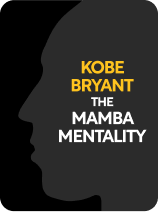

This article is an excerpt from the Shortform book guide to "The Mamba Mentality" by Kobe Bryant. Shortform has the world's best summaries and analyses of books you should be reading.
Like this article? Sign up for a free trial here .
What does being coachable mean? How does Kobe Bryant explain the importance of learning and being coachable in The Mamba Mentality?
Being coachable means being open to learning about your strengths and weaknesses. Many athletes struggle with coachability, but Kobe Bryant explains that it’s one of the most important parts of playing sports.
Read more about being coachable and how it will help you become a better athlete.
Being Coachable: Learn Constantly
The views on Kobe Bryant on learning are explained in The Mamba Mentality. The book is about the effort to reach success, not the moment you reach the finish line. Throughout his 20-year career, despite his mastery of the game, Kobe never ceased learning and striving to improve. In 2003, he felt that he had reached his pinnacle and had become unstoppable—but he didn’t view that moment as the beginning of his decline. Instead, Kobe was driven to continue working and refining his game because he consistently looked ahead toward future goals, instead of looking back and admiring what he’d already achieved.
Being Coachable: Learn From the People Around You
When Kobe joined the Lakers, he knew he was becoming part of an organization with an impressive legacy, where many of basketball’s greatest players had shone, including James Worthy, Elgin Baylor, and Byron Scott. Kobe worked hard to honor and continue that legacy. Although he was only 17 when he joined the team, the Lakers staff, players, and alumni quickly recognized Kobe’s drive and embraced him as a member of the Lakers family.
Once Kobe joined the league, his support team included people who were as obsessive and passionate about their crafts as he was about his. These people included:
- His coach, Phil Jackson. Jackson took a big-picture approach to coaching, emphasizing the importance of teamwork and encouraging players to harness their focus and energy to improve their game. Jackson’s calm focus complemented Kobe’s fire. Initially, their differences caused them to misunderstand each other and butt heads, but, over time, they got on the same page and balanced each other.
- His assistant coach, Tex Winter. Whereas Jackson focused on the big picture, Winter homed in on details. During Winter and Kobe’s first year together, they re-watched every game together to examine the details.
- His teammate and coach, Byron Scott. Scott played for the Lakers during Kobe’s rookie year, and Kobe often picked Scott’s brain for technical advice and tidbits on retired greats, such as Magic Johnson and Kareem Abdul-Jabbar. When Scott returned to the Lakers as a coach during Kobe’s final years, their relationship picked right back up. As a coach, Scott had a gift for giving players the tools to excel.
- His physical therapist, Judy Seto. Seto was still early in her career when Kobe joined the team, so they grew and matured together throughout his career. Seto became so indispensable to Kobe that she even traveled with him on work trips and family vacations.
- His trainer, Gary Vitti. Vitti was a master and a perfectionist when it came to taping up Kobe’s ankles and finger. Seeing Vitti’s dedication, Kobe could trust that he was in good hands and keep his focus on training and playing.
As a professional—and a top player in the league—Kobe also had access to retired basketball stars, whose careers and techniques he admired. Kobe valued the opportunities to build relationships with these players, whom he could learn from and look up to. Kobe asked endless questions, and most players appreciated his attention and genuine interest. When Kobe encountered people who became annoyed with his questions, he shook it off—he’d rather be informed and potentially embarrassed than miss a chance to learn. This is part of his coachability.
The views of Kobe Bryant on learning were to learn from anyone, and to from his mentors. Among Kobe’s friends, teachers, and mentors were:
- Jerry West, who had been a player, coach, and general manager. West answered Kobe’s relentless questions honestly and bluntly, which Kobe learned was a sign that West genuinely cared about him.
- Magic Johnson, a former Laker and an all-time great. Kobe admired Johnson for his contributions to the game, and Kobe appreciated that Johnson—and other former players—had already faced the challenges and learned the lessons that were still ahead of him. He tried to learn from the knowledge and experience of Johnson and others. Specifically, Kobe learned from Johnson how to throw a cross-court bounce pass.
- Kareem Abdul-Jabbar, a former Laker who had been friendly with Kobe’s father, Joe Bryant, when Joe was on the San Diego Clippers. Kobe had done a book report about Abdul-Jabbar in school, and, as Kobe got older, he continued following and learning about Abdul-Jabbar. When Abdul-Jabbar joined the Lakers staff, Kobe jumped at the chance to form a relationship and ask plenty of questions.
- Muhammad Ali, whose hard work and dedication in boxing inspired Kobe on the court. Although they competed in different sports, Kobe picked up two important lessons from Ali: First, the fame and glory that comes with accomplishment requires a huge amount of hard work and focus behind the scenes. Second, find a way to use your opponent’s strength against him.
- Bill Russell, a former NBA player and coach. Kobe read Russell’s autobiography and was struck by the advice that, in order for a team to win a championship, each player needs to have the freedom and focus to do what he does best. The message made an impression on Kobe, and he immediately reached out to Bill and forged a relationship.
Kobe Bryant on Learning: Learn in Unexpected Ways
Another part of being coachable is being willing to learn from anyone. Kobe learned from everyone, including referees. He read the referee’s handbook and learned that each ref is supposed to be in a particular position on the court. With this knowledge, Kobe figured out where the refs’ blind spots were, and he was able to hold, travel, and make other small violations without getting caught.
Additionally, Kobe maintained friendly relationships with the referees. He appreciated the difficulty of their work: They had to think and act quickly, deal with high emotions, try to remain objective, and take the blame for bad calls. Kobe also hoped that his rapport with the refs would make them more open to his view when he challenged their calls.
Being coachable means having a willingness to learn and a willingness to fail. When you work on your coachability, keep in mind that lessons can come from anywhere.

———End of Preview———
Like what you just read? Read the rest of the world's best book summary and analysis of Kobe Bryant's "The Mamba Mentality" at Shortform .
Here's what you'll find in our full The Mamba Mentality summary :
- How Kobe Bryant was able to play and dominate the best players
- Why Kobe took up tap dancing for a summer
- How reading the referee's handbook helped Kobe improve his game






